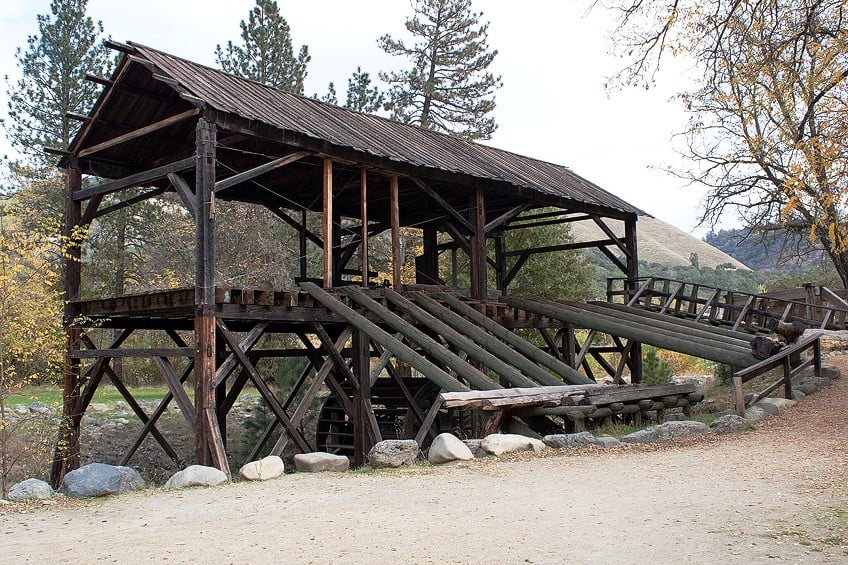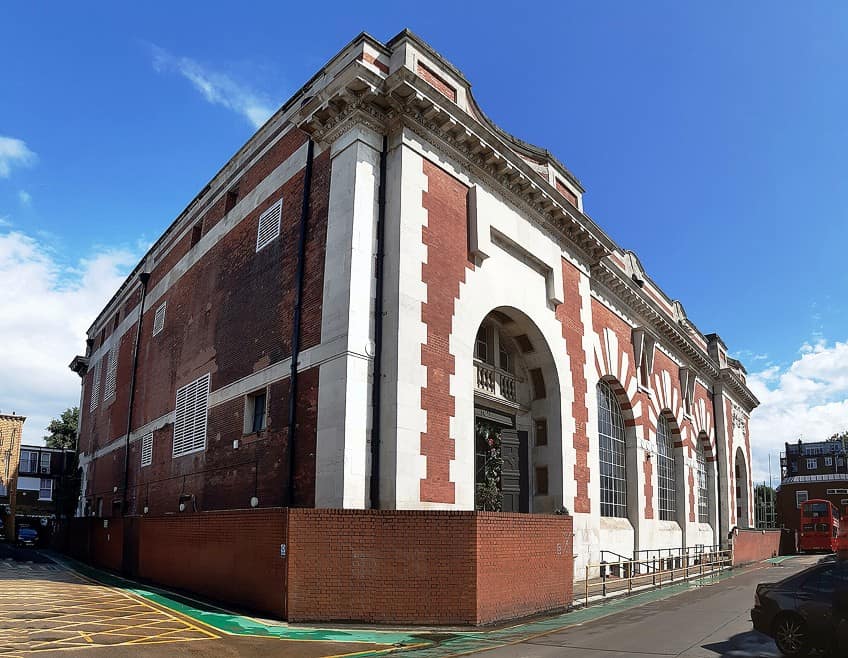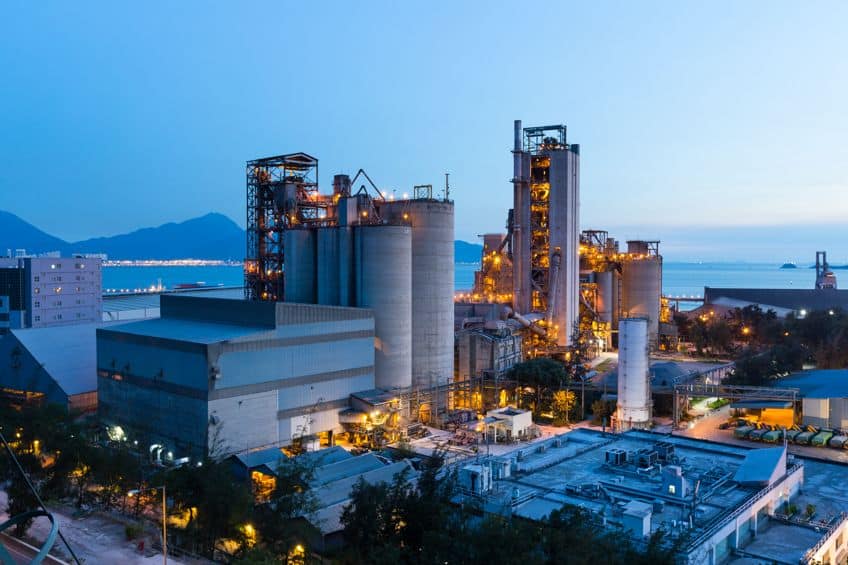Industrial Architecture – What Are Industrial Buildings?
What are industrial buildings? Industrial architecture can be found throughout our world. Industrial buildings form an integral part of the development of the aptly named modern industrialized society. These buildings fulfill functions such as being factories and warehouses, and so they are necessary for modern human life. We will examine industrial architecture, its history, some of its characteristics, where it’s going, and a few specific examples. Keep reading to learn more about industrial architecture!
A Look at Industrial Architecture
Industrial architecture is everywhere around us. This is architecture that in some or another way is focused on aspects of the industrial world. There are many different types of industrial buildings in the world, and there are also many industrial architects. These figures don’t often receive as much attention as architects who construct different kinds of buildings, but their work has been influential on other architectural styles.
Without industrial architecture, there wouldn’t have been many of the innovations in Modernist architecture, or some of its subcategories, like Brutalist architecture. So, let’s have a look at industrial architecture.
Historical Background
Industrial architecture saw many of its origins at the advent of the Industrial Revolution. While there may have been various buildings that could be termed instances of industrial architecture before this period of time, this important phase in human history is when these structures really started to take off. The Industrial Revolution led to the development of new machines, trade possibilities, and materials that could be used in all manner of things around the world.
The first of these new industrial buildings were constructed in Britain in the 18th century, and as one successive Industrial Revolution after another transpired, new technologies and structures were designed and implemented.
Some of the earliest were small-scale, such as workshops, but as industry increased in scale, the development of factories became a major driving force into the mid-19th century. Thereafter, the scale of these buildings and operations would only increase. Transportation also became more sophisticated as railways were designed and ran across continents, and then inventions like steamboats allowed for even greater and more robust trade routes. Once the 20th century was underway, industrial architecture only further increased, warehouses scaled up in size, and factories became more machine-oriented.

In the 21st century, some of the biggest industrial architects come from companies like AECOM, Stantec, and Jacobs. Each of these architectural firms produces some of the most innovative industrial buildings that are currently in operation, and they have been around for decades at this point.
Industrial architecture is a big business, and as industry can be seen in practically all aspects of contemporary life, this form of architecture is likely to stick around as long as humans engage in industry.
Characteristics of Industrial Architecture
Industrial architecture is not typically noted for its immense beauty. Instead, industrial buildings are usually known for aiming toward pure functionality. For this reason, they often include high ceilings, exposed inner workings for ease of access (such as pipes), a general lack of ornamentation (including the absence of elements like paint in favor of face brick or raw concrete walls and floors, and much more. The whole purpose of industrial architecture, in general, is the prioritization of both productivity and efficiency.
This means that these structures need to be built large, around changeable elements in case new technologies are developed, and they need to ensure the most optimal layout of all elements within the design, including things like lighting.
In addition to this, industrial architecture is always looking for ways of improving efficiency and productivity. This is often done through more innovative designs or technological advancements. Some of these will be discussed below, but an attempt at constant improvement is often characteristic of industrial buildings, especially those owned and operated by larger and more powerful companies.
Industrial Architecture in Contemporary Society
There are many different types of industrial architecture in the world. There are some rather common types of industrial buildings, such as warehouses and factories, but there are far more than just these. There are also mines, power plants, sawmills, oil rigs, warehouses, foundries, and many more. Industrial buildings are found in practically every city, and they form a major part of the human urban landscape.
This means that the impact of these structures is also extensive.
Industrial areas in cities have led to the development of various types of zoning restrictions as certain people do not necessarily want to live next to a factory as it pumps toxins into the air, but certain groups are in a better position to demand these structures be built elsewhere. For this reason, industrial areas are often situated beside regions that have become more impoverished areas that receive fewer social services.
In addition to this though, industrial buildings and regions mean more work. For this reason, many of those who work in these kinds of buildings are incentivized to live near them. This can foster the development of certain types of cultural identities. One only needs to look at the well-documented cases of mining communities. Not everyone in those towns necessarily works in the mines, but the mines do employ most, and so it serves as the backbone of the local economy.
Humans typically want to live in better areas though, and as such, it makes sense why these areas are often considered to be undesirable for people to live in.
Although, the advent of more sustainable and ecological forms of architecture, which have also affected industrial buildings, has since been developed, such as the Amager Bakke building in Denmark. This is both a power plant and a ski slope. This is a good indication of the kinds of things that industrial architecture can do but often doesn’t. Perhaps the future of industrial architecture will be brighter than the present.
The Future of Industrial Architecture
Industrial architecture has an even greater reason to move towards innovation than many other architectural styles. We know that a Neoclassical building will stand, and so it does not necessarily need to make use of the latest technologies, but industrial buildings are different. They are not designed with aesthetics in mind, they are instead designed with practicality and functionality in mind. For this reason, there is the constant integration of new technologies into industrial structures. The only reason a company would retain an old means of production is for the purpose of it being a gimmick, such as a company that produces books that are designed with a traditional printing press.
Scalability is of immense importance, and this is why new technologies in the realm of automation have become increasingly common.
Automation can come in many forms and can often involve the use of robotics in some or another form. This could mean the integration of these kinds of systems into structures themselves or outside them. Assembly lines that include no humans, drones that eliminate the need for drivers, and so on. These are the kinds of technologies that are constantly being implemented in industrial structures. With the proliferation of technologies such as these, it could even be possible that there would be a future of industrial architecture that removes elements otherwise deemed essential, such as permanent lighting and ventilation systems. Machines do not need to breathe, they do not need to go to the bathroom, and so on.
The future of industrial architecture is explicitly tied in with the future of industry itself. Additionally, the increases in technology could lead to certain benefits for the environment, such as technologies that reduce electricity usage, greenhouse gas emissions, and pollution. Much of this is, at the time of writing, more on the speculative side of things. However, while we tend to focus on many architectural styles, such as Modernism and Deconstructivism, we tend to ignore things like industrial architecture.
It lacks the beauty and elegance of many other structures that are designed, at least partially, with aesthetics in mind.
We should not ignore industrial architecture though. This architectural form is one of the most important in shaping the way that humans interact and operate within the world. It provides us with our workplaces, our consumable goods, and it facilitates the many services we may wish to utilize. Industrial architecture is immensely important for the development of global technology.
Examples of Industrial Buildings
Our planet is full of industrial buildings and industrial architects. These buildings come in many different varieties and for a number of disparate purposes. Let’s have a look at some of the buildings that would go on to influence modern industrial architecture.
Yuengling Brewery Building (1829) in Pottsville
| Architect | William Curtis Green (1875 – 1960) and J. Clifton Robinson (1848 – 1910) |
| Date Constructed | 1829 |
| Function | Brewery |
| Location | Pottsville, Pennsylvania, United States |

The Yuengling Brewery building is the oldest brewery still in operation in the United States. This building was first constructed in the early days of the Yuengling Company in the early 19th century. The building was constructed in the American Round Arch style of architecture when it was still called the Eagle Brewery, a name that would later change. An interesting thing about this particular brewery is that it managed to survive the American Prohibition era by transitioning to non-alcoholic beers and ice cream. Today, it makes a variety of different types of beer.
Sutter’s Mill (1847 – 1848) in Sierra Nevada
| Architect | James Wilson Marshall (1810 – 1885) |
| Date Constructed | 1847 – 1848 |
| Function | Sawmill |
| Location | Sierra Nevada, California, United States |

Sutter’s Mill does not quite exist in its original state any longer. This 19th-century sawmill has been reconstructed and maintained over the years, but that reconstruction did follow the original design. The structure itself was constructed to aid in the processing of the vast quantities of timber that were used in the agricultural business that the Sutters owned and operated. The site gained far greater fame when gold was discovered nearby. The sawmill has not been needed for its original function since its original operation in the mid-19th century.
The Big Hole (1871 – 1914) in Kimberly
| Architect | Non-Applicable |
| Date Constructed | 1871 – 1914 |
| Function | Open-pit mine |
| Location | Kimberly, South Africa |

The Big Hole is a gigantic open-pit mine located in South Africa. This mine is claimed to be the deepest in the whole world that was dug entirely by hand, although this has been subject to dispute. The gigantic pit mine is 463 m (or 1,519 ft) wide and 240 m (or 787 ft) deep. This absolutely massive pit mine was integral to the development of the diamond industry in the country, but today, it is used as a tourist destination and a nearby museum discusses its history.
Power House (1901) in Chiswick
| Architect | William Curtis Green (1875 – 1960) and J. Clifton Robinson (1848 – 1910) |
| Date Constructed | 1901 |
| Function | Power station |
| Location | Chiswick, United Kingdom |

The Power House in Chiswick is one of the oldest electrical power stations in existence. The building is no longer used for this purpose, but it was in operation ever since its construction in 1901 until 1917. The building, unlike many instances of modern industrial architecture, is designed in a more artistic style as it adopts a Baroque appearance. Included in this design are the two carvings etched into the façade. The building currently serves as a recording studio and residential apartments.
India House (1906) in Manchester
| Architect | Harry S. Fairhurst (1868 – 1945) |
| Date Constructed | 1906 |
| Function | Warehouse |
| Location | Manchester, United Kingdom |

India House is an old warehouse located in Manchester, and it was constructed in an Edwardian Baroque style. However, this industrial building does make use of some materials that were later considered to be far more indicative of industrial architecture in general: a steel frame. Aside from this, the building is constructed from terracotta, and it includes large windows for better ventilation and lighting.
We have come to the end of our discussion about industrial architecture. We have examined the history of industrial architecture, its characteristics, its future, and several industrial buildings that have aided in the development of modern industrial architecture. Hopefully, you have learned a good deal about industrial architecture and can now go and appreciate some of what those industrial buildings are made to do.
Frequently Asked Questions
What Are Industrial Buildings?
Industrial architecture is any type of architecture that is specifically designed with the industrial sector in mind. This means that industrial buildings are those that are built in such a way that they can be used for industry, such as warehouses, factories, and so on. There are many different types of industrial buildings, but they are typically designed with functionality over aesthetics in mind.
What Are the Positive Effects of Industrial Architecture?
Industrial buildings, and industrial architecture in general, are designed with productivity in mind. This means that industrial buildings are some of the best ways to foster economic growth in a region. Additionally, they can form integral parts of a community, such as mining communities being built around mines. They also often serve as landmarks because of their distinctive appearance when juxtaposed against architecture meant for more aesthetic enjoyment.
What Are the Negative Effects of Industrial Architecture?
The negative effects of industrial buildings are where attention is generally paid as they are typically bad for the environment, they can lead to ugly landscapes because of their usually monotonous design, they can form part of economic inequality as residential areas around industrial sectors tend to be cheaper, and they are often constructed out of lower quality materials for cost-saving purposes.
Justin van Huyssteen is a writer, academic, and educator from Cape Town, South Africa. He holds a master’s degree in Theory of Literature. His primary focus in this field is the analysis of artistic objects through a number of theoretical lenses. His predominant theoretical areas of interest include narratology and critical theory in general, with a particular focus on animal studies. Other than academia, he is a novelist, game reviewer, and freelance writer. Justin’s preferred architectural movements include the more modern and postmodern types of architecture, such as Bauhaus, Art Nouveau, Art Deco, Brutalist, and Futurist varieties like sustainable architecture. Justin is working for artfilemagazine as an author and content writer since 2022. He is responsible for all blog posts about architecture.
Learn more about Justin van Huyssteen and about us.
Cite this Article
Justin, van Huyssteen, “Industrial Architecture – What Are Industrial Buildings?.” artfilemagazine – Your Online Art Source. July 24, 2023. URL: https://artfilemagazine.com/industrial-architecture/
van Huyssteen, J. (2023, 24 July). Industrial Architecture – What Are Industrial Buildings?. artfilemagazine – Your Online Art Source. https://artfilemagazine.com/industrial-architecture/
van Huyssteen, Justin. “Industrial Architecture – What Are Industrial Buildings?.” artfilemagazine – Your Online Art Source, July 24, 2023. https://artfilemagazine.com/industrial-architecture/.





